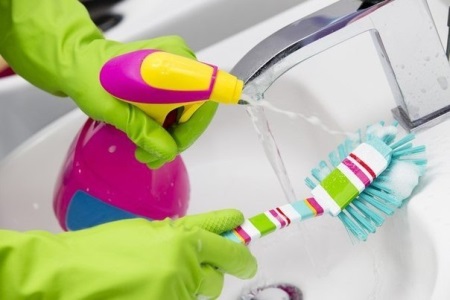Toilet brush
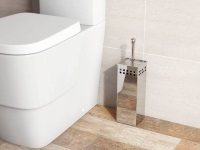
A toilet brush, as we are accustomed to seeing, appeared in our homes a little later than the toilet bowl - in the 30's of last century. Contrary to popular belief, this device is well known throughout the world, including in America, where it was invented. Without this simple but indispensable thing, cleaning the toilet would become a very time-consuming and unpleasant task. And so - a hard round brush on a long handle solves all problems.
Most of us buy toilet brushes just for the occasion and do not think about the variety of types and features of this household accessory. But in order to maintain hygiene in the house at the proper level, knowledge of such little things can be useful. In this article, we will talk about what kind of toilet brushes are, how they should be chosen and how to properly care for them.
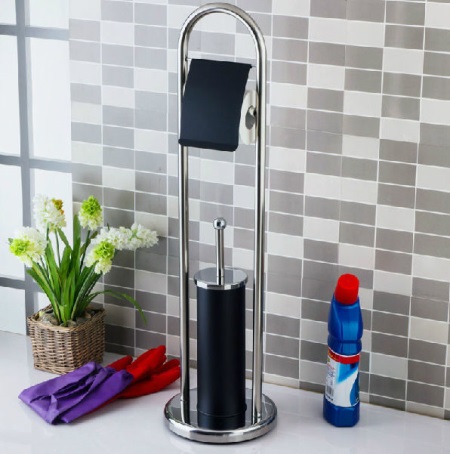
Types
A toilet brush has become such a familiar thing for us that no one treats its purchase seriously. However, once in the store and faced with a variety of modifications, we often find it difficult to make a choice. Let's consider the most popular models of toilet brushes.
Floor (with stand)
This is the most common type, which stands next to the toilet in almost every home. It is a rounded brush on a plastic (most often) stick about half a meter long. This device is held by a special stand-glass, into which the water drops from the bristles flow. This model of toilet brush is the most inexpensive - the price for it starts with a few tens of rubles. The disadvantage of the design is that the water in the stand is a favorable environment for the development of pathogenic bacteria. That is why, for the sake of your own safety, the brush should be replaced every few months.
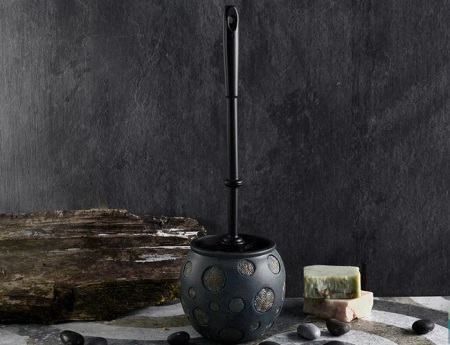
Wall mounted toilet brush
This is a more modern version of the floor model. A cup holder is attached to the wall, into which the toilet brush is inserted. The wall-mounted toilet brush makes cleaning the toilet easier, as it frees up the already cluttered floor of the bathroom. In addition, a wall-mounted toilet brush is convenient for the elderly who have difficulty bending over to the floor. Wall-mounted models usually have an unusual, beautiful design. These toilet brushes are often made of chrome-plated metal or sanitary ware, which adds to the design of the bathroom aesthetics and style. Wall-mounted toilet brushes are slightly more expensive than floor models, because the kit also includes a set of mounts.


Suspended
Just like the previous type of toilet brush, the hanging toilet brush is attached to the wall. However, it is not held on a stand, but on a special hook. On the floor under the brush is set a special container in which the water flows. This modification of toilet brush is recognized by experts as the most safe in terms of hygiene, because the water from the container can be drained several times a day, and it is easier to wash than conventional stand glass. These toilet brushes are often purchased for the toilets of public institutions, where special requirements are imposed on the sanitary condition of sanitary facilities. Most pendant models have a pleasant, stylish design. The price of hanging toilet brushes starts at 500 rubles.
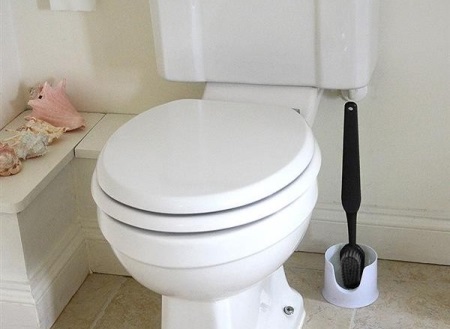
With a holder for toilet paper
Recently, models of toilet brushes that combine the functions of several devices for the bathroom have begun to appear. An example of such a model is a multifunctional model "hybrid" of a toilet brush and a toilet paper holder. This device is a rather high stand on which two stands are fixed. Such a design solves the problem with the lack of space in the bathroom and allows you to keep all the necessary accessories at hand. Quite often this combination also includes a stand for cleaning products or newspapers. There are quite a few variations of toilet paper holders, so you can find a suitable one for any toilet.
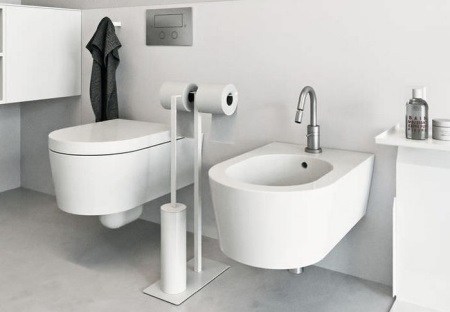
Materials
Materials that are used in the production of toilet toilet brushes are not particularly diverse. They have a few basic requirements - water resistance, the ability to withstand the effects of aggressive cleaning agents and resistance to microbes.
The bristles of toilet brushes are usually made of synthetic material, which is inexpensive and easy to clean. There are more expensive models with bristles of raw materials of natural origin, which require special care.
Handles of toilet brushes and stands for them are usually made of the same material. The most common materials are plastic, metal and sanitary ceramics. Occasionally there are models made, for example, from rare species of wood, but they serve more of a decorative function.
The plastic brushes are the most inexpensive option. It is easy to throw away after a few months of use. Models made of chrome-plated metal or ceramic are much more expensive and therefore require more careful handling.
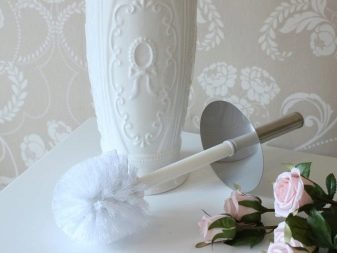
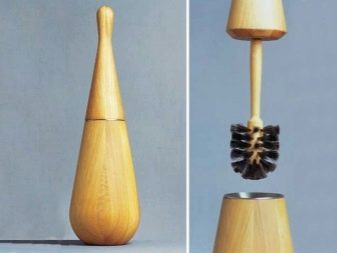
Unusual design
In fact, the choice of toilet brushes today is simply huge. In addition to classic options, you can find in stores models that demonstrate the entire range of design fantasy and wit. Original toilet brushes are sold not only in plumbing stores, but also in the departments of gags and pranks.
For example, there is a whole series of toilet brushes in the form of famous politicians. They are cartoon figures of presidents of different countries that have a toilet brush sticking out of their heads instead of their hair.
Popular toilet brush in the form of cartoon animals or fairy tale characters. Such models allow you to quickly teach a child to perform basic hygiene procedures.
Interesting models of toilet brushes, stylized as bowling pins, guns with a silencer or inverted wine glasses.
The use of such unusual, playful accessories in the design of the bathroom or toilet allows you to give the appearance of the room a share of relaxedness, so necessary to create a harmonious interior.
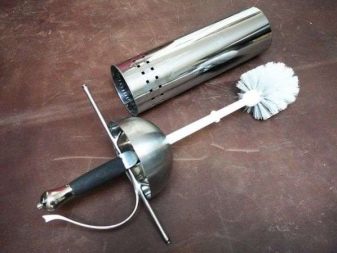
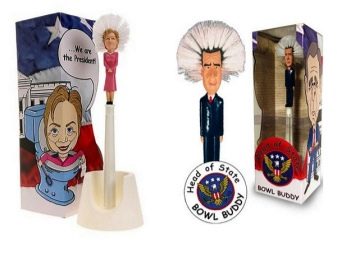

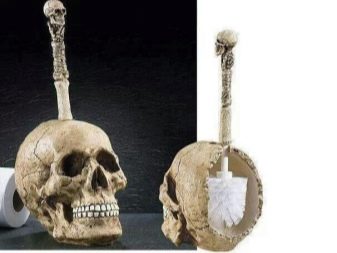
Choosing the right one
Choosing the right toilet brush is very easy, you only need to follow these tips.
- The bristles of the toilet brush should be hard - only then it will be good at scrubbing off even stale dirt. Soft bristles can cope only with simple dirt, and with a hard brush you can remove lime scale.
- When buying a toilet brush, you should pay attention to the handle. The length of the handle should be chosen based on your height - so you do not have to bend down too much. The material must be rigid enough, otherwise the handle can break with a little physical effort.
- Give preference to collapsible models: if necessary, they can be easily washed, cleaned and dried. With this kind of care, the life of the toilet brush is much longer.

How do I use the toilet brush?
There are a few simple rules for using a toilet brush. Some of them we follow intuitively, while others may be new to some.
- Hold the brush firmly in your hand before you use it. Don't hold the handle too low, or you could get your hands dirty or wet.
- The best way to clean your toilet is with a wet brush. Feel free to dip the brush into the toilet bowl (of course, if the water in the drain is clean). For the best effect, pour an antibacterial cleaning agent into the drain beforehand.
- After cleaning is complete, rinse the brush by draining the water from the cistern. In this way you will get rid of the unpleasant smell and most of the dirt.
- Dry the brush a little after cleaning: just tap it several times on the rim of the toilet bowl so that the water drops into the bowl.
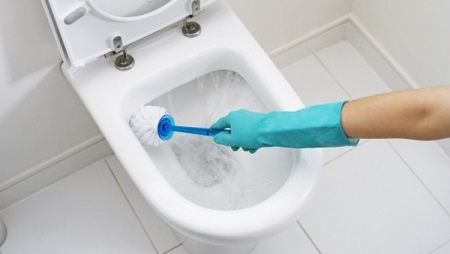
Care
For different models of toilet brushes the handling rules are different. For example, hanging toilet brushes should be stored according to the following guidelines:
- The bristles of the toilet brush should not touch the floor or the walls;
- the container into which the water from the brush drips should be cleaned periodically.
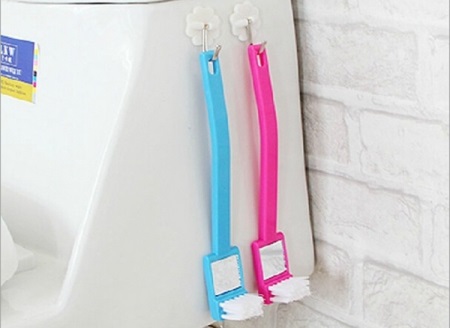
For floor models the rules are somewhat different:
- in the stand-cup for a brush should be poured antibacterial agent;
- The brush itself needs to be replaced once in three months.

Toilet brushes should be periodically cleaned - so they will last longer and will be safer in terms of hygiene.
Housewives use several common ways to clean toilet brushes:
- Soak the brush in an antibacterial solution (e.g. hydrogen peroxide, manganese solution or boric acid solution);
- briefly immerse the brush in concentrated acetic acid or bleach solution (be especially careful not to damage the skin);
- soak the brush for one hour in a mixture consisting of any concentrated detergent, ½ cup of baking soda, ¼ cup of acetic acid and ½ liter of boiling water.
